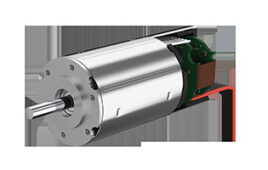Materials science is one of the fastest moving scientific fields. As such, there are so many advancements happening in the industry that it can be difficult to keep track. Here, Benjamin Stafford, materials science specialist at materials comparison tool Matmatch, outlines some of the most interesting materials scientists that are contributing to developments in nanotechnology at the moment.
Most fields of scientific study have a founding father or prominent figurehead. For chemistry, it’s Lavoisier and for physics it’s a tie between Newton, Galileo, and Einstein. For materials science, however, there is no central figure that set-in motion materials studies.
In fact, it wasn’t until the 1950s that the US President Science Advisory Committee (PSAC) made the development of materials a priority, when it realized that materials were a limiting factor for advances in aerospace and military applications.
The work of material scientists is still pivotal to the development of many emerging technologies, including nanotechnology. In particular, Matmatch has identified the following six scientists making strides in materials for nanotechnology.
Professor Pulickel Ajayan
Professor Pulickel Ajayan is the Benjamin M. and Mary Greenwood Anderson Professor in Engineering at Rice University. He has committed much of his research to the applications of nanomaterials in energy storage, composites, electronics, and sensors.
Most notably, Professor Ajayan is one of the pioneers in the field of carbon nanotubes and was involved in the early studies of the material with the NEC Fundamental Research Laboratory in Tsukuba, Japan. To date, Professor Pulickel Ajayan has published one book and 850 journal papers, amassing nearly 70,000 citations.
Dr Jessamyn Fairfield
At the National University of Ireland, Dr. Jessamyn Fairfield heads a group investigating and developing ground-breaking computational devices based on nanowires that mimic the brain’s networks of neurons. She is a regular public speaker, promoting physics research and education to a wider audience and has highlighted the use of comedy in science with her TED talk. Aside from multiple awards from the Institute of Physics, she is a regular contributor to the popular science magazine, Physics World.
Professor Peidong Yang
Another professor well known for his work on nanowires, primarily for his research on their electronic and optical properties, is Peidong Yang. He is currently a professor of Chemistry and of Materials Science at the University of California, Berkeley, holds high-level positions in additional research centres and is associate editor for the Journal of the American Chemical Society.
Having co-authored over 200 peer-reviewed journal articles, he has been listed in the past as the world’s most highly cited materials scientist and regularly features on the Clarivate list of Highly Cited Researchers. Yang’s own paper room-temperature ultraviolet nanowire nanolasers has received over 5000 citations since it was first published in 2001.
Professor Yi Cui
Professor Yi Cui at the Department of Materials Science and Engineering at Stanford University leads a group investigating applications of nanotechnology in energy, environmental technology, biotechnology and electronics. He is and has been on the editorial boards of numerous high-impact factor scientific journals in the fields of materials science and nanotechnology.
One of his research achievements involves having found a way to link together certain nanoparticles, called nanotetrapods, so that they can self-assemble into a particular pattern including arrays of transistors. This discovery, because of the nanotetrapods size, could likely lead to the creation of circuits that run several times faster than circuits in today’s computer chips.
Professor Hongjie Dai
Hongjie Dai is the J.G. Jackson & C.J. Wood Professor of Chemistry at Stanford University. He is ranked as one of the top chemists in the world by Science Watch, is the editor-in-chief of the journal Nano Research and is a leading scientist in the study of carbon nanotubes.
Properties from nanomaterials are not only useful for electronics but also for the improvement of energy storage and Professor Dai has been developing nanocarbon-inorganic particle hybrid materials for exactly this purpose. This information has made it possible for other scientists to make substantial progress in energy research because of his discoveries.
More recently, Professor Dai has been recognised for his group’s work on developing aluminium-ion batteries with graphite cathodes that represent a new dimension in battery science and technology.
Professor Michael Graetzel
This brings us to our last materials influencer, Michael Graetzel. Having been one of the main developers of the Graetzel cell, he is considered a leader in the field of materials for the solar power industry. His work has gone on to result in the discovery of perovskite solar cells, considered some of the most intensively studied materials in the world.
Having authored 1300 publications and holding more than 50 patents, Graetzel has played a significant role in the research for energy and electron transfer reactions in mesoscopic-materials and their optoelectronic applications. He also pioneered the use of nanomaterials in lithium ion batteries.
Michael Graetzel is currently director of the Laboratory of Photonics and Interfaces at the École Polytechnique Fédérale de Lausanne.
The future
In addition to staying up to date with the latest research, engineers can use Matmatch as not only a tool for material sourcing but also for checking the credibility of a material’s properties. Our materials scientists at Matmatch have sifted through various internal databases and found materials to be listed without technical data sheets to support the property claims of the described material.
The materials industry is constantly advancing. For design engineers, it’s important to have a basic understanding of newer and existing materials, before they come to market, so they can consider the viability of these materials for future product designs.
Filed Under: Materials • advanced, MOTION CONTROL




